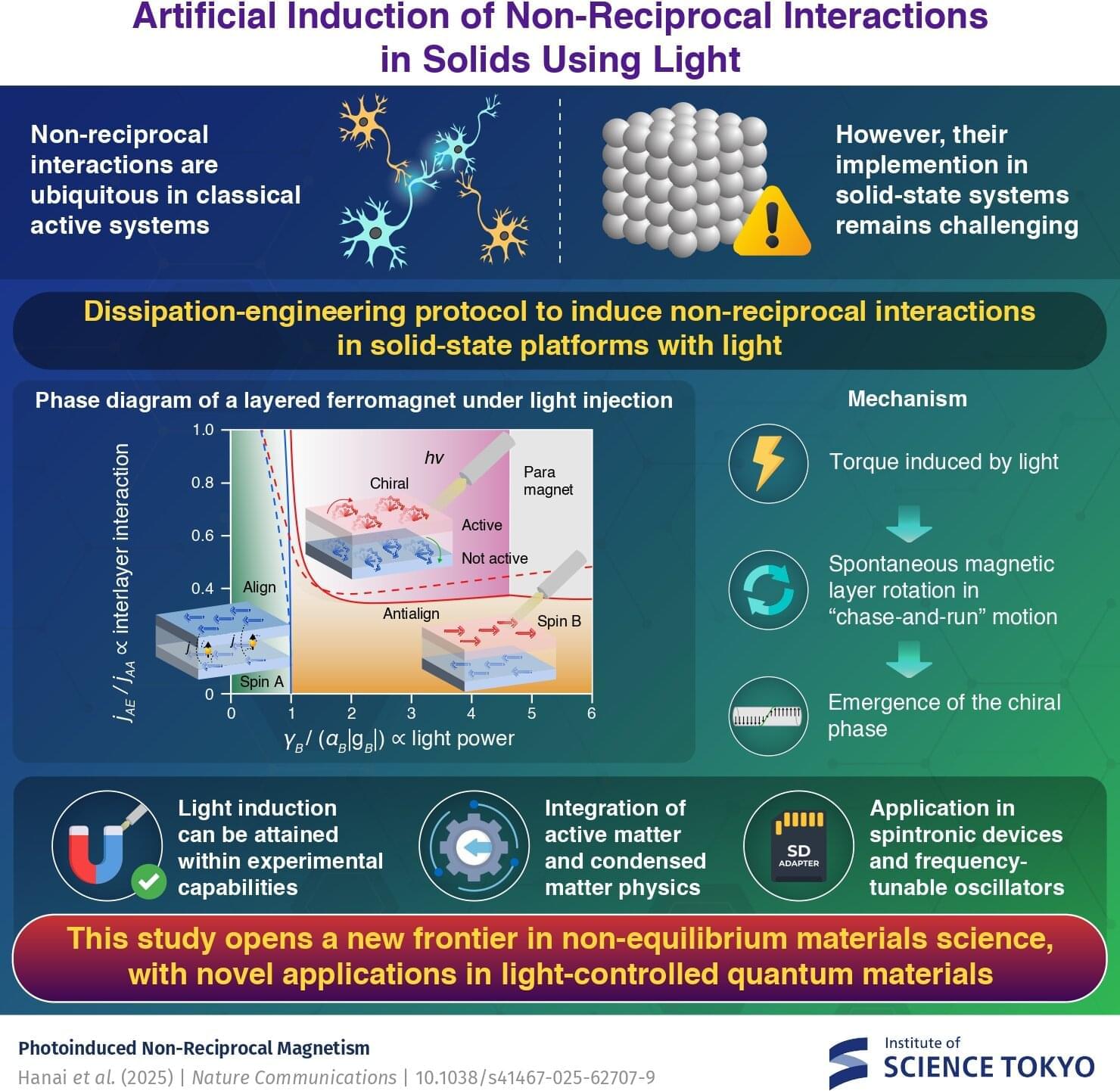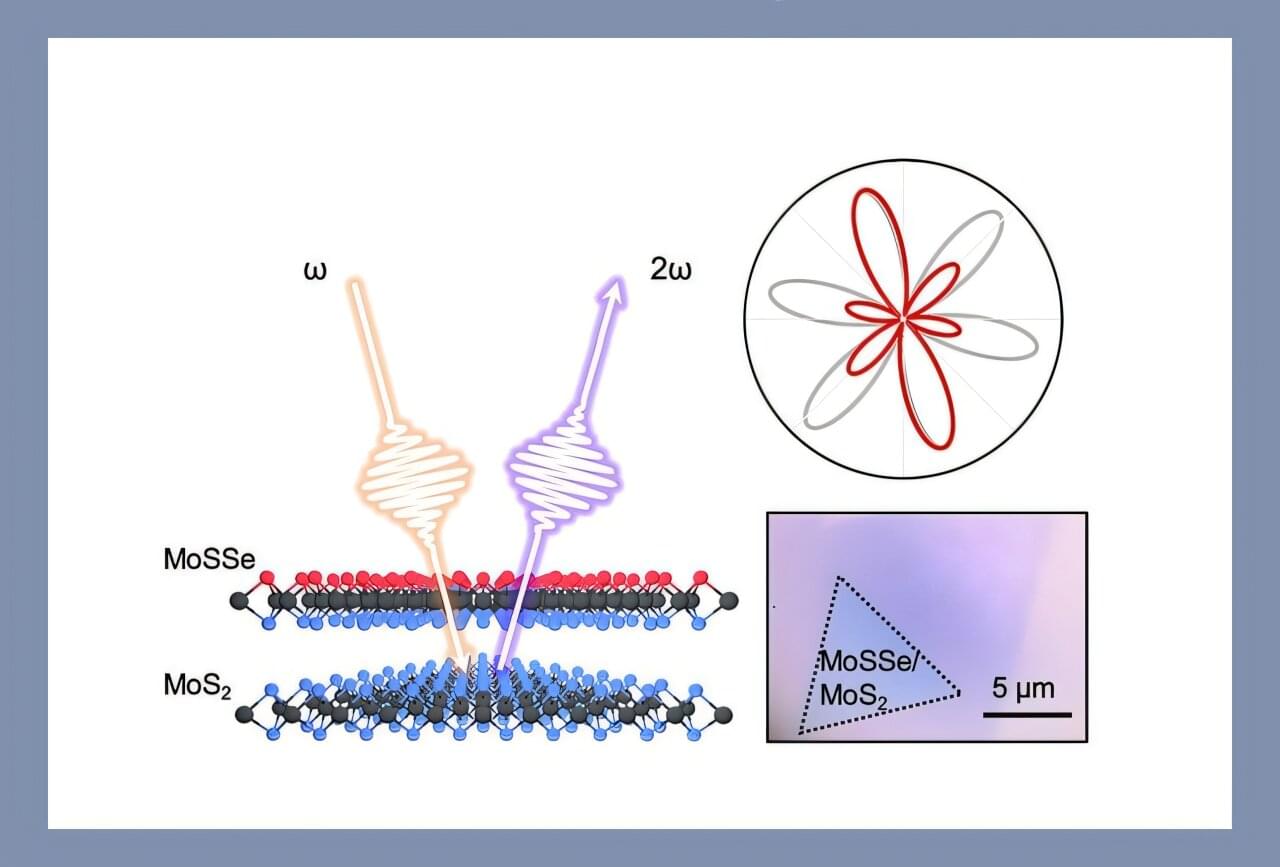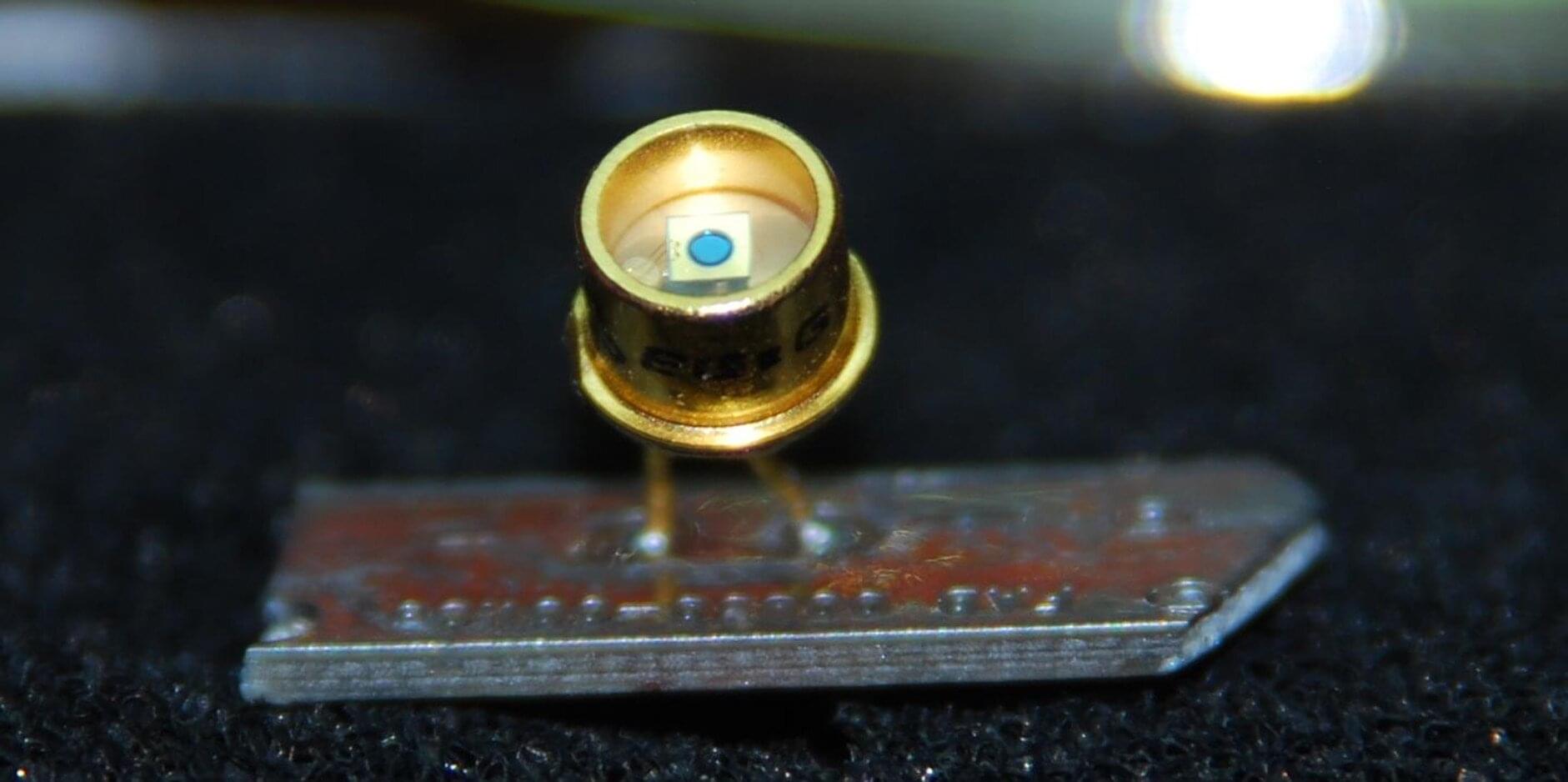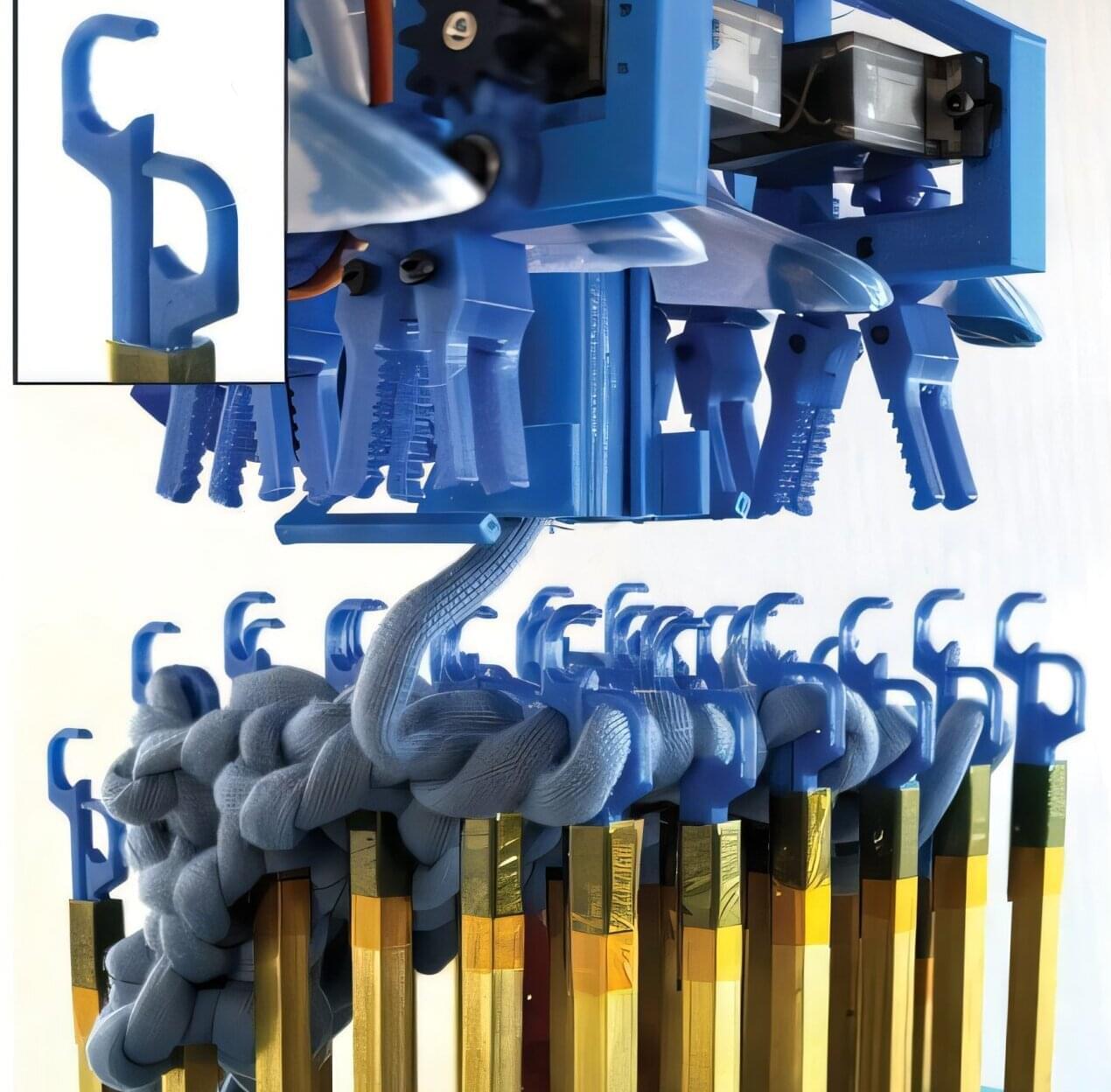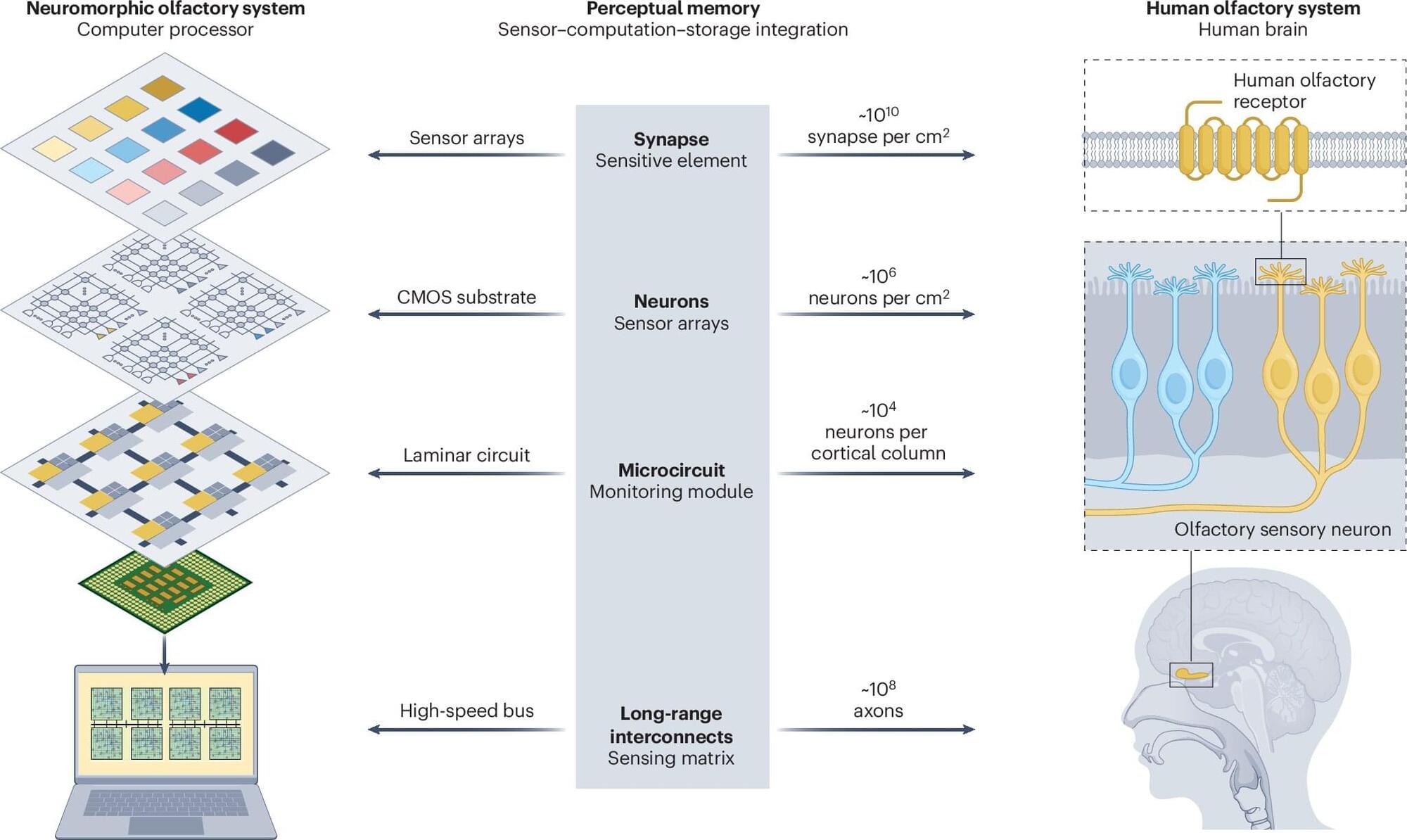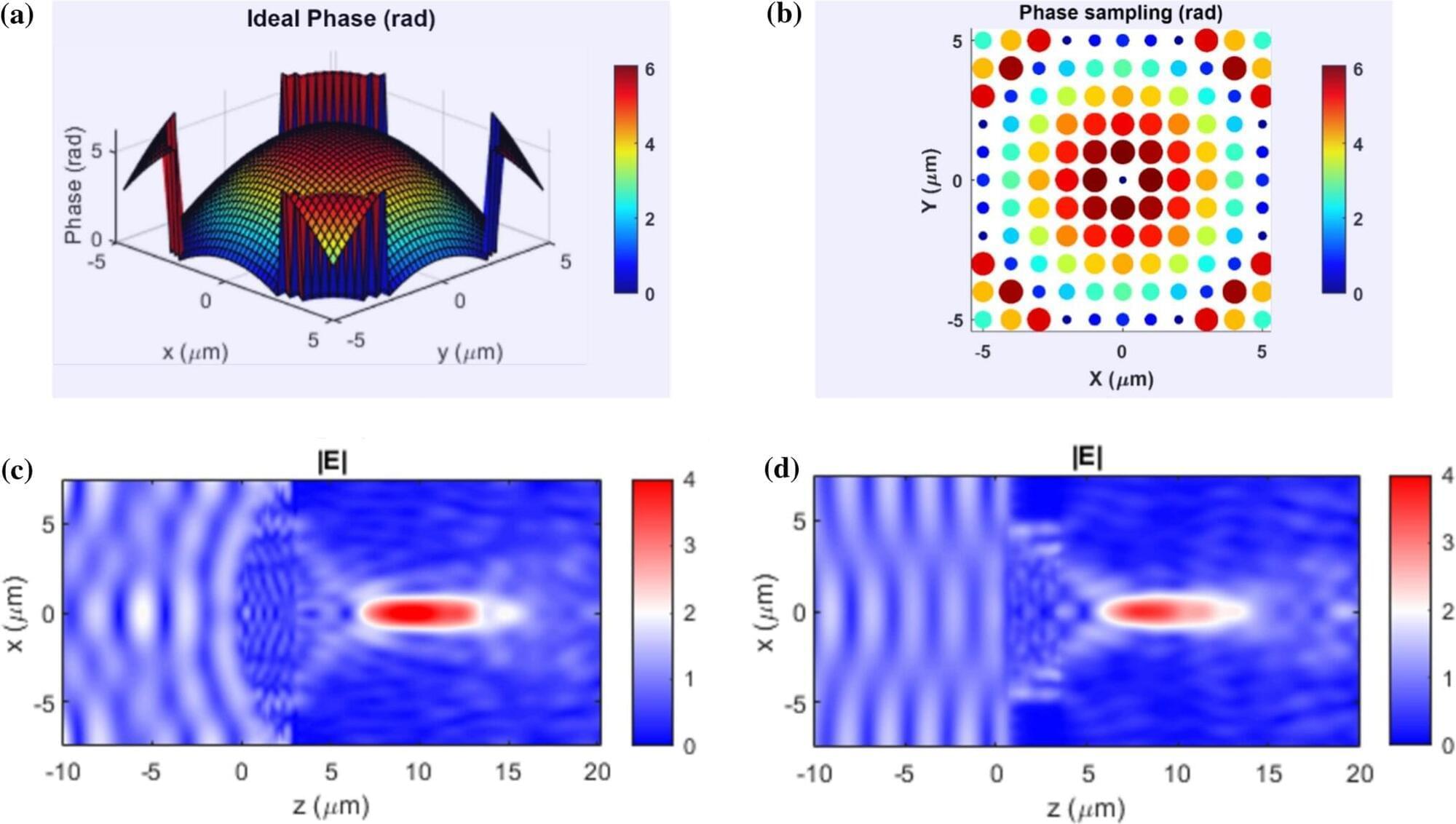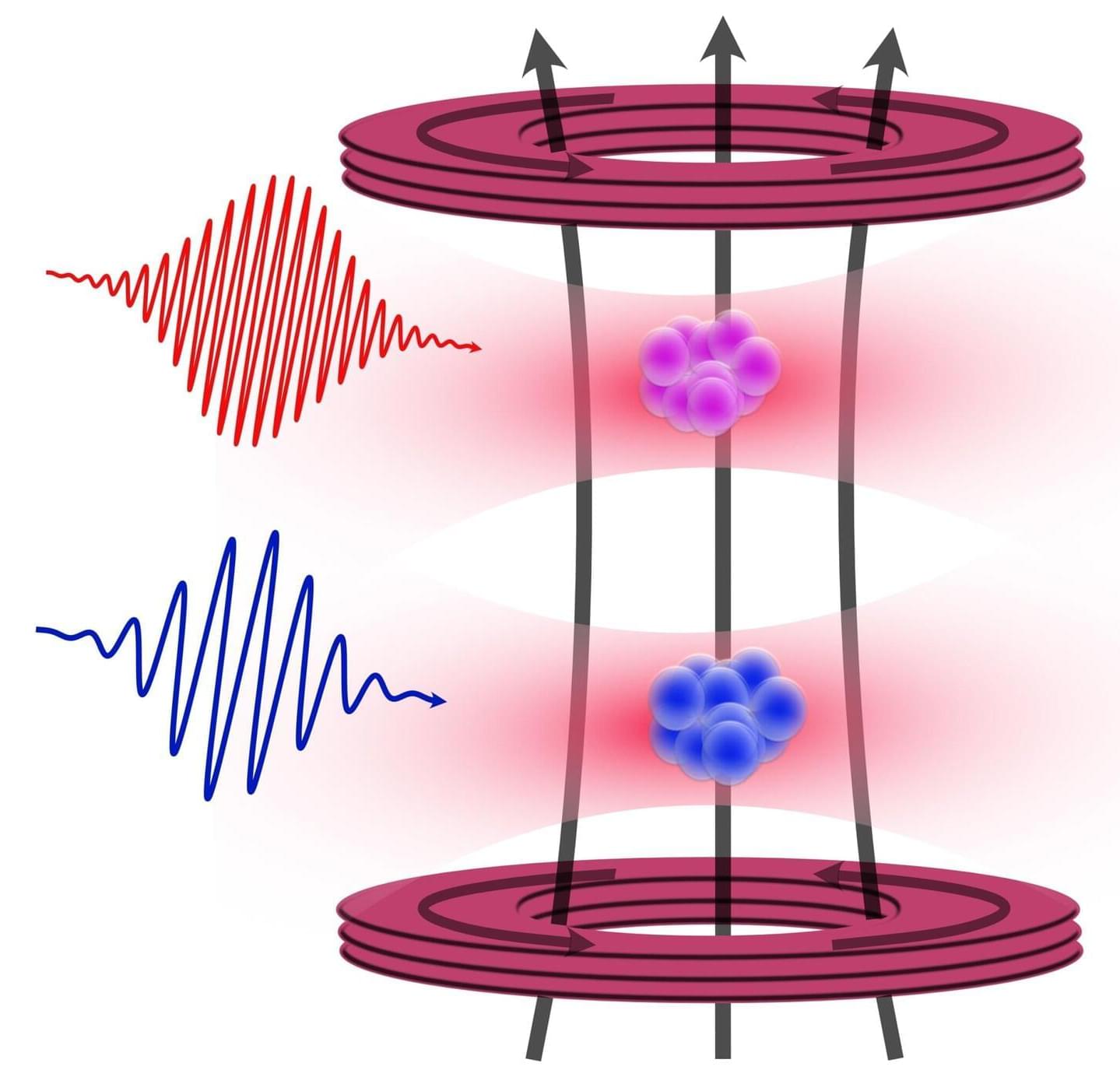A theoretical framework predicts the emergence of non-reciprocal interactions that effectively violate Newton’s third law in solids using light, report researchers from Japan. They demonstrate that by irradiating light of a carefully tuned frequency onto a magnetic metal, one can induce a torque that drives two magnetic layers into a spontaneous, persistent “chase-and-run” rotation. This work opens a new frontier in non-equilibrium materials science and suggests novel applications in light-controlled quantum materials.
In equilibrium, physical systems obey the law of action and reaction as per the free energy minimization principle. However, in non-equilibrium systems such as biological or active matter—interactions that effectively violate this law—the so-called non-reciprocal interactions are common.
For instance, the brain comprises inhibitory and excitatory neurons that interact non-reciprocally; the interaction between predator and prey is asymmetric, and colloids immersed in an optically active media demonstrate non-reciprocal interactions as well. A natural question arises: Can one implement such non-reciprocal interaction in solid-state electronic systems?
